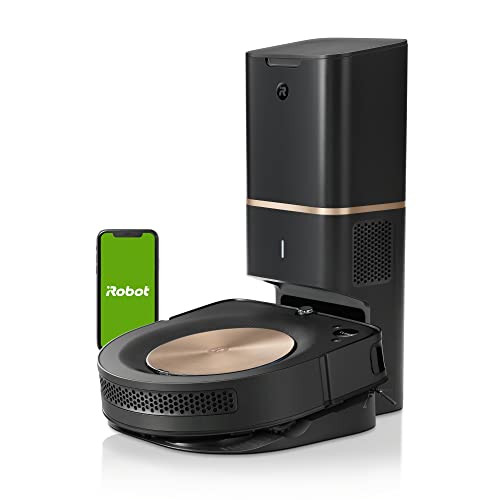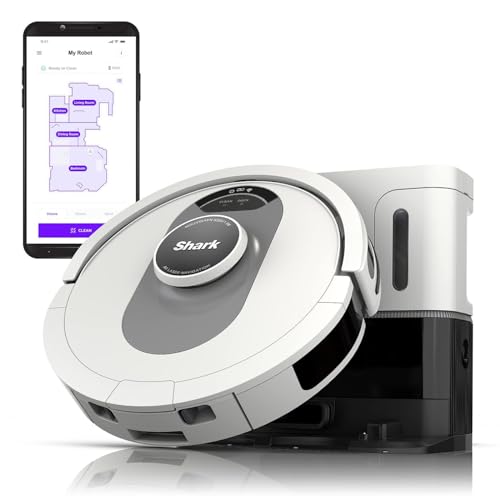Who Is Responsible For An Robot Vacuum Budget? 12 Ways To Spend Your M…
페이지 정보

본문
 How to Find the best robotic mop and vacuum Robot Vacuum
How to Find the best robotic mop and vacuum Robot VacuumIf you don't require advanced features like mapping and you do not mind cleaning your trash bin every 60 to 90 days, a basic robotic vacuum is probably suitable for you. Select a model with clean and tidy base that is compatible with voice assistants.
It is the most effective robo-vacuum we have tested at getting rid of dirt and pet hair on hardwood floors, tile, and carpeting with low pile. It can also plan out and create virtual no-go zones in rooms or specific areas.
1. Powerful Suction
A robot vacuum will help you keep up with the pet fur, dust and dander that settles on your floor each day. It can also reduce the frequency of deep cleaning, saving you time and effort. The best model has powerful suction that will easily take on the most difficult messes and leave your home clean.
Selecting a vacuum that can also mop can help you cover more ground with one machine, which is especially beneficial in a larger home. You can find a model with a water tank either built into the chassis or as an extra piece that you can swap out after vacuuming. It will need to be emptied and refilled and refilled, which is an additional task.
In a perfect universe it would be ideal to clean your floors first before using your robot vacuum, preventing it from hitting anything. In the majority of homes, however, this is not possible or desirable. Most robots allow you to utilize an app for your smartphone to build virtual barriers that the robot can see. Some models have no-go zones that you can mark areas you don't want the robot to be allowed to enter. For example, a child's room or a pile of cords in an area.
If you're looking to buy a basic robot vacuum with no bells and whistles, this model from the networking company TP-Link is a good choice. It is quiet, works on both hard floors and carpets with low pile and can be programmed via the app to mop and vacuum at your convenience. It has a long battery life, and can last for up to 180 minutes before it needs to recharge.
2. Simple to operate
In general robot vacuums require little input from you. They utilize instruments for navigation, such as sensors cameras, lasers, and sensors to maneuver and collect pet hair, dust, and food crumbs from hard floors, tiles and hardwood. Many models have boundaries strips that help them stay inside a room. More expensive models can be programmed to wake up at a specific time and start cleaning. Some models have fall detection technology that helps users avoid falling down the stairs or becoming tangled in cords.
If you want to control your robot vacuum from the comfort of a couch, look for models that integrate voice assistants such as Alexa and Google Assistant. You can also search for models with Wi-Fi connectivity that let you start a cleaning session from anywhere using an app. You may prefer a model that has an extremely long-lasting battery as well as a large dustbin, depending on the size of your home.
Some robot vacuums are also mopping. They make use of water reservoirs to clean the floor. This is great for mopping, but not for difficult messes such as pet poop or other wet spills. There are hybrids that have an ejectable microfiber pad for mopping, or choose an auto-emptying model that lets you go for 30 to 60 days without having to empty the base.
3. Smart Mapping
Certain robots utilize advanced mapping technology to build a detailed map as they clean. This makes it easier to avoid hitting furniture and tripping on cords or chair legs. This feature is only available on higher-end models, but it lets your robot have a thorough understanding of your home's layout and know where to move when the battery runs out.
If you do not want your robot to go into areas of your home that you'd rather it stay away from (like your kids' toys or the tangled mess of device cords in the corner) Most robots provide some method of creating virtual barriers, either through their apps or physical boundary strips. This allows you to block off zones that you don't want your robot enter, so that it can concentrate its attention on the rooms and spaces that need the most attention.
Many robots also have the ability to automatically navigate to different flooring types depending on the floor they're cleaning, whether that's switching between hard and carpet or focusing on specific areas of your home, like baseboards and corners. This feature proved to be helpful in our tests and improved the performance of the vacuum on hardwood flooring and carpeting for floors with low-pile. But, it's still essential to put away loose cords and furniture before running your robot vacuum so that it doesn't get caught or come into contact with something it shouldn't.
4. Remote Control
Most robot vacuums have WiFi capabilities and can be controlled using voice commands, Google Assistant, Amazon Alexa or Siri Shortcuts. Many connect to smart home systems that create an outline of your space after each cleaning session to "learn" your layout and design more efficient routes for future trips. Some have built-in obstacle avoidance that stops them from crashing into furniture and damaging it or getting stuck on things like loose charging cables or shoe laces, as well as pet hair.
Most robots come with a remote that you can use to pilot them around your home. However, the majority of them can be controlled via a mobile app, which gives you more features. You can set up a variety of cleaning schedules and create an agenda of your most-loved rooms. You can also manually guide the robot with direction the arrows.
Some models provide no-go zones These are virtual barriers you can create in the app to block the robot from entering certain areas (like toys for children or dog beds and bowls). Certain apps let you create an image of your home and provide more detailed information about the floors. The app that we recommend as our top pick Roborock S7+, the Roborock S7+, has many useful options to help you clean your home, however its interface isn't as polished as those from iRobot and Shark.
5. Long Battery Life
Robotic vacuums that can sweep throughout the house without stopping to recharge or empty their trash bins save you time and effort. Certain robot vacuums can work with smart home platforms such as Alexa, Google Assistant, and Siri Shortcuts to allow hands-free operation. They can also create an image of your living space and allow you to program them to clean specific areas or rooms and stay clear of obstacles.
The majority of robot cleaner and mop vacuums come with some level of object detection however, higher-end models like the iRobot j7 come with advanced features such as "home mapping" and advanced obstacle avoidance, which can make your life easier (although our test bot did "eat" socks). socks). If you want to take your home maintenance even further opt for a robotic mop that has a tank of water that you fill and empty yourself.
While none of the models we tested can match the dirt-picking power of a stand-up vacuum the majority of them do an excellent job of cleaning carpets and hard floors. They are great in sweeping up dust and food crumbs, tracked-in dirt and pet hair. They are also able to tackle pet litter that is stray and metal screws and nuts. The best robot cleaner with mop vacs can easily maneuver through furniture, and they do a great job of cleaning edges and corners as well. Eufy 11S is a relatively inexpensive and basic model.
6. Convenient Self-Charging
With the right configuration with the right setup, a robot vacuum will aid in keeping your home looking and feeling cleaner on a regular basis with minimal effort. You can schedule cleanings through the app, and you can create no-go zones so that your robot vacuum and mop doesn't get in the way of your favorite chair or plants. A majority of our top picks will empty their dustbins for you and clean their docking station.
The top robot vacuums are programmable to clean your floors regularly for weeks or even months at a time, which saves you the time and effort of manually sweeping or mopping your floors every single week or even every day. This lets you spend more time doing things you enjoy and reduces the time it takes to clean your floors manually.
During tests the Q Revo was able grab fine particles like baking soda and oatmeal. It also snatched up larger particles like nails and screws made of steel, as well as fluffy things like pet hair. It lacks the advanced mapping and objects-avoiding features of our top picks, but it is still a good choice for most families.
The Best Inexpensive Robot Vacuum [Pulsardirectory.Com] thing about the j7 is its ability to detect and avoid obstacles like power cords as well as socks and shoes, and pet waste. This means that you don't have to tidy up before using your robot. However, cluttered rooms can cause your robot to become stuck and perform poorly.

- 이전글A Provocative Rant About Bagless Robot Vacuum 24.09.02
- 다음글The 10 Most Terrifying Things About Best Bunk Bed Design 24.09.02
댓글목록
등록된 댓글이 없습니다.


